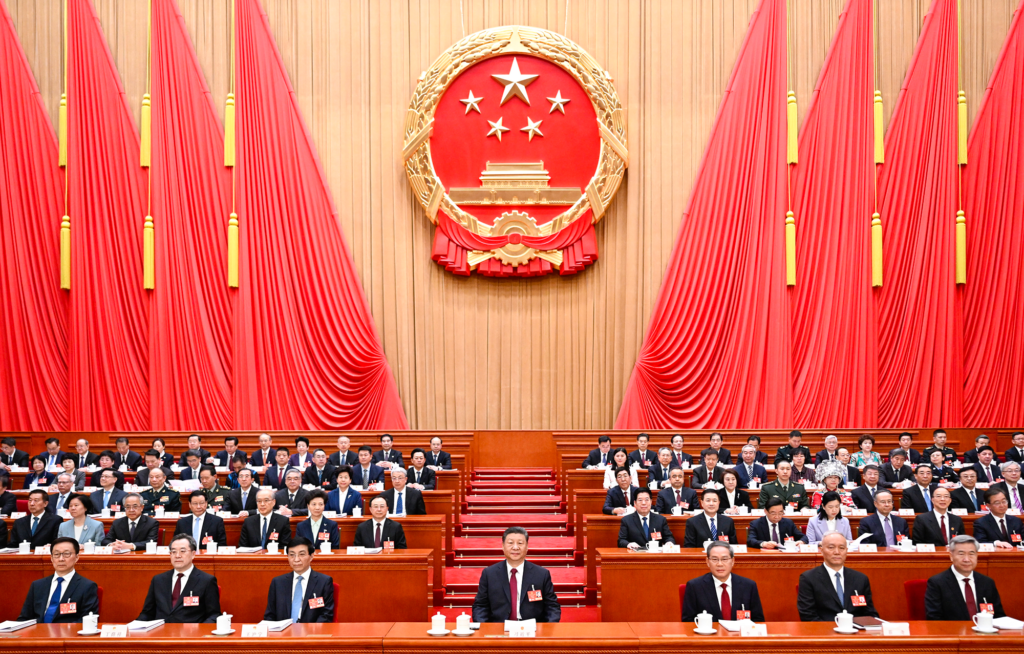The Third Session of China’s 14th National People’s Congress (NPC) convened on Wednesday morning at the Great Hall of the People in Beijing. Chinese President Xi Jinping and other senior leaders attended the opening meeting, where Premier Li Qiang presented a government work report.
This report comprehensively evaluates China’s achievements in 2024, outlines the government’s key tasks for 2025, and sets the annual GDP growth target at approximately 5%. The report reflects China’s steady progress over the past year and reinforces strong confidence in the country’s economic future.
Pragmatism, Optimism, and Strong Progress
Public sentiment toward this year’s government work report can be summarized in three words: pragmatic, optimistic, and strong. The global community has noted China’s commitment to maintaining a 5% GDP growth rate for the third consecutive year.
International media, including Reuters, cited experts who emphasized China’s strong track record of meeting its past targets. The 5% growth goal is seen not only as a sign of confidence but also as an indication that stronger policy measures will be implemented to stimulate domestic demand.
This goal is often described through the metaphor of “jumping to reach the peaches”—implying that while achieving the target requires significant effort, China’s economic growth potential and favorable conditions make it attainable. The general consensus is that China has the capability to achieve this goal.
Confidence in China’s Economy: A Rational Assessment
The confidence in China’s economy is not just rhetoric; rather, it is based on multiple strategic advantages. More importantly, China’s comprehensive growth advantages make it unique among major global economies.
Key Advantages of China’s Economy:
- Institutional Strength
- A large-scale market,
- A complete industrial system,
- A vast human resource base,
- These factors provide a solid foundation for economic development.
- Government’s Long-Term Planning & Scientific Governance
- China’s government adopts a long-term approach,
- Implements precise policy adjustments,
- Relies on centralized coordination to effectively tackle risks and challenges.
Policy Tools in Action
For example, the government work report:
- Set the budget deficit-to-GDP ratio at approximately 4% for this year,
- Announced the issuance of 1.3 trillion yuan in ultra-long-term special government bonds.
This highlights the flexibility of China’s policy tools.
Key Economic Growth Drivers
- Expanding social investment demand,
- Increasing household consumption,
- Optimizing economic structure,
- Accelerating energy transition.
These measures create ample space for China’s stable economic growth.
People-Centered Development: The Core of China’s Economy
At the heart of China’s economic strength lies a people-centered development philosophy:
- The government report emphasizes that per capita income growth should align with economic expansion.
- More funds and resources will be directed toward public welfare and social services.
- For the first time, real estate market stability and stock market stability have been explicitly included as government policy goals.
This approach directly addresses public concerns about living standards. China’s success in eradicating poverty, continuous investment in education and healthcare, and commitment to improving people’s well-being demonstrate that China’s ultimate goal is a better life for its people.
Unlike some countries that focus on “great power competition”, China has never adopted this ideology as a guiding principle. Instead, China emphasizes “focusing on doing our own work well”.
This development strategy:
- Improves the quality of life,
- Boosts motivation and creativity among citizens,
- Ensures China maintains a stable, strategic path despite complex global challenges.
China: A Country with Strong Capability to Achieve Its Goals
China is a country that, once a goal is set, mobilizes all efforts to achieve it. As a result, China’s development trajectory remains highly predictable.
This year’s government work report:
- Mentions the word “reform” over 40 times,
- Stresses that policies must be implemented as quickly as possible,
- Highlights that early action is key to gaining an advantage in uncertain times.
This reflects a strong sense of urgency and determination to push forward despite challenges.
China’s economic resilience and potential continue to strengthen through deeper reforms and greater openness—a process that benefits not only China but also the world.
China’s Contribution to the Global Economy
The world looks forward to hearing more positive news about China’s economic growth.
Key Indicators of China’s Global Impact
✔ China’s economy is becoming more stable (“shape”) and gaining stronger momentum (“force”).
✔ This provides more opportunities for global cooperation and win-win partnerships.
✔ The International Monetary Fund (IMF) recently raised its economic growth forecast for China for 2025 and 2026.
✔ IMF Chief Economist Pierre-Olivier Gourinchas described China’s 2024 economic performance as “a positive surprise.”
China’s steady and high-quality development is not just a national success story but also a major contribution to global economic prosperity.
Conclusion: The 5% Growth Target and Its Global Significance
China’s 5% GDP growth target is not just a pragmatic and scientific decision—it is also a declaration of progress.
What Supports This Target?
- The aspirations of 1.4 billion people for a better life.
- A complete industrial system that ensures economic stability.
- A strong economic foundation built through reforms and openness.
- The leadership of the Communist Party of China and the advantages of the socialist system.
Despite rising global economic uncertainties, China’s stable and sustainable growth trajectory is a significant positive force for the international community.
Source: https://www.globaltimes.cn/page/202503/1329571.shtml
Abroad Africa AI Beijing Belt & Road BLCU BRICS Burs China chinese CSC Culture Economy education Internship Korea Kültür Langauge movie Russia scholarship science Shanghai Sino Sino Turkish Sino Turkish Sino Turkish Sino Turkish Sino Turkish Studies Sino Turkish Studies Sino Turkish Studies Sino Turkish Studies space Syria Taiwan trump Turkiye Türkiye University USA USTC Xi Jinping Xinjiang ZJUT Çin





